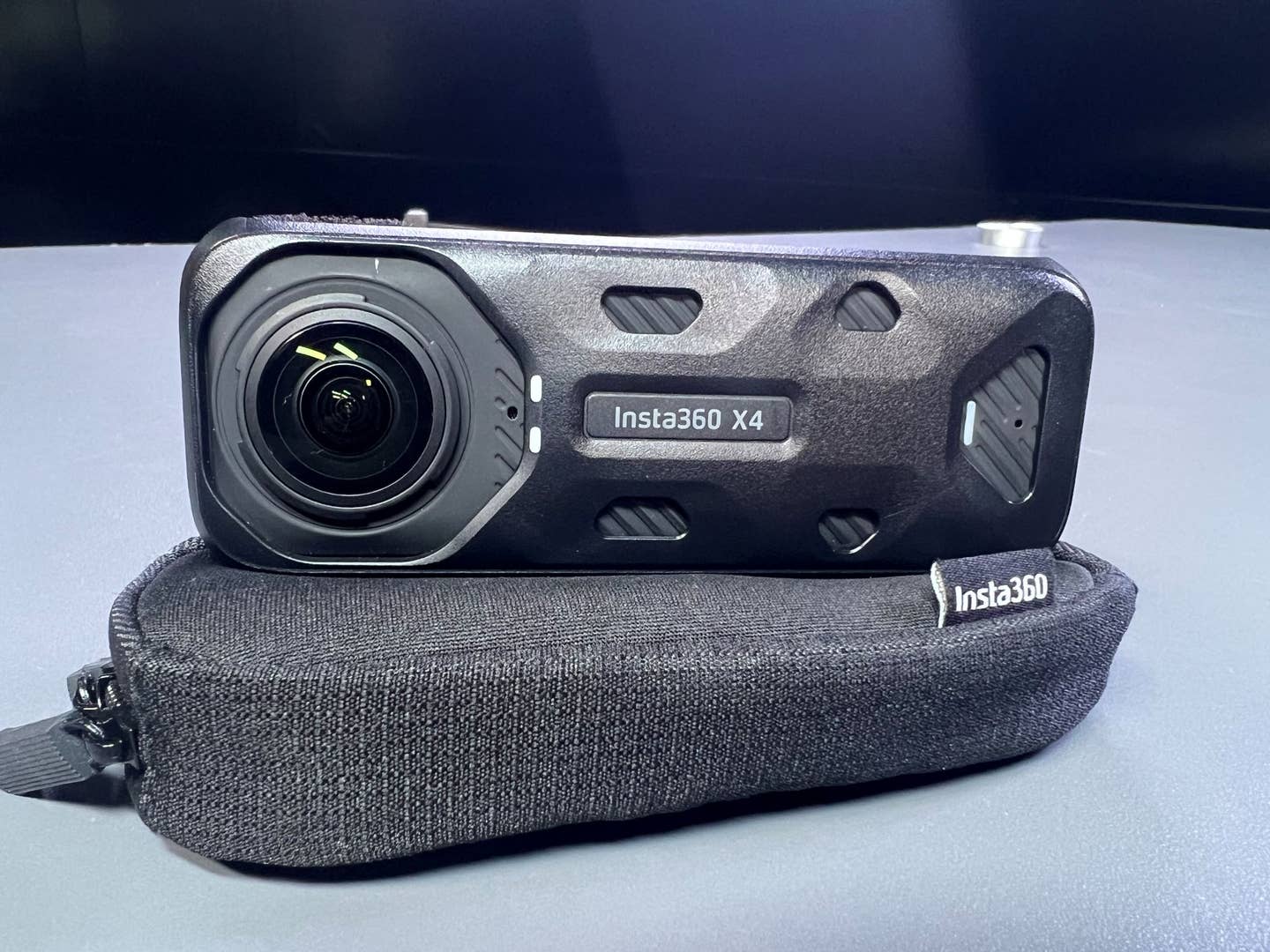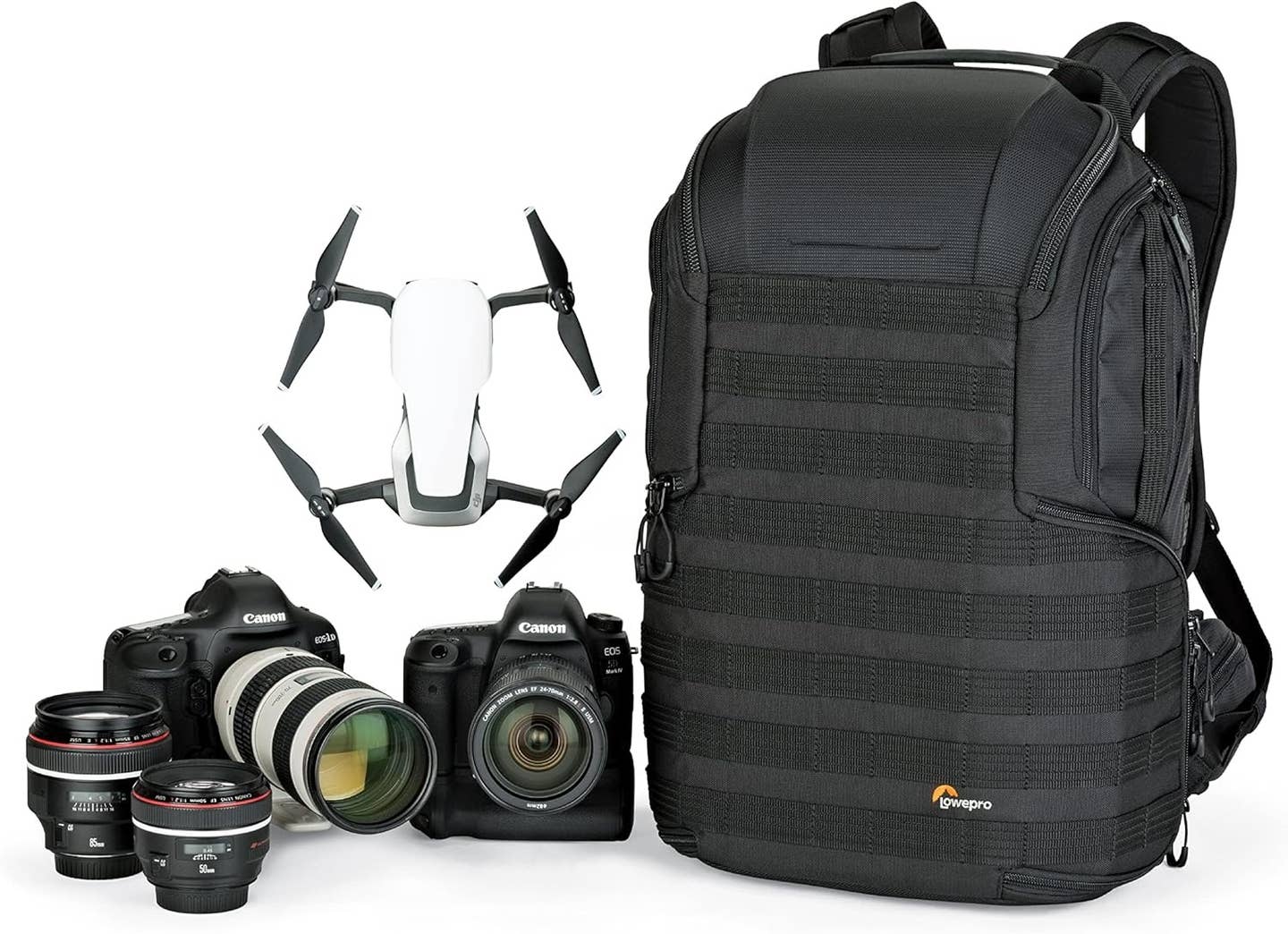Best Personal Locator Beacons & Satellite Messengers
If you’re flying over remote terrain where traditional communication methods may be unreliable, you may be wondering how anyone would be able to reach you in case of an emergency….
[Plane & Pilot file photo]
If you’re flying over remote terrain where traditional communication methods may be unreliable, you may be wondering how anyone would be able to reach you in case of an emergency. This is where a personal locator beacon (PLB) or a satellite messenger can come into play.
PLBs are emergency devices that transmit distress signals via satellite. Pilots carry PLBs as a last-resort distress signal. If an aircraft crashes or becomes stranded, activating the PLB alerts search and rescue authorities.
Satellite messengers, on the other hand, allow customized two-way messaging via satellite networks. Pilots can use satellite messengers for emergency and non-emergency communications, trip planning, and keeping connected in remote areas. They provide SOS capabilities, location sharing, and text messaging.
Keep reading for a side-by-side comparison of the best PLBs and satellite messengers on the market today, and explore their crucial role they play in aviation safety.
Quick Look: 5 Best Personal Locator Beacons & Satellite Messengers
- Best for ruggedness: ACR ResQLink 400
- Best for simplicity: McMurdo FastFind 220
- Best for affordability: SPOT Gen4
- Best for compact size: Garmin inReach Mini 2
- Best for all-in-one features: Iridium Go!
Top PLB & Satellite Messenger Options
PLBs and satellite messengers are essential items for any survival kit and could save your life in an emergency. Let’s explore the different PLBs and satellite messengers available on the market today.
ACR ResQLink 400
The ACR ResQLink 400 PLB utilizes a built-in GPS paired with a 406 MHz transmitter and can alert search and rescue teams around the world of the current location within minutes of activation. The PLB works with the next generation MEOSAR satellite system for faster alerting times. It is compatible with both the U.S.’s GPS and the European Galileo system for precise position fixes. The unit’s rugged build includes a built-in antenna and single SOS button activation.
Best for: Ruggedness
Features:
- PLB/satellite messenger: PLB
- Satellite network: Cospas-Sarsat, MEOSAR
- Subscription plan: No
- Battery life: 5 years, 24+ hours of operational life
- Waterproof: Yes, up to 10 meters
- Additional features: Small and lightweight; global coverage
Disadvantages:
- Does not allow for two-way messaging
- Once activated, the unit cannot be reset or reused
- Replacing the battery can be costly compared to rechargeable alternatives
- Manual, instead of automatic, activation is required during an emergency
Price: $369.95
McMurdo FastFind 220
The McMurdo FastFind 220 is a simple, user-friendly PLB. It can transmit continuously for a minimum of 24 hours on both 406 and 121.5 MHz. The unit is waterproof up to 10 meters and comes with a flotation pouch and lanyard. An LED strobe flashes SOS in Morse code when activated. If registering the unit outside of the U.S, the McMurdo Fast Find 220 PLB — Programmed for Rest of World Registration version must be purchased.
Best for: Simplicity
Features:
- PLB/satellite messenger: PLB
- Satellite network: Cospas-Sarsat
- Subscription plan: No
- Battery life: 6 years, 24+ hours of operational life
- Waterproof: Yes, up to 10 meters
- Additional features: Accelerated location detection; LED SOS Morse code flashlight installed
Disadvantages:
- Does not allow for two-way messaging
- Once activated, the unit cannot be reset or reused
- Replacing the battery can be costly compared to rechargeable alternatives
- Manual, instead of automatic, activation is required during an emergency
Price: $254.99
SPOT Gen4
The SPOT Gen4 is a Globalstar-based satellite locator and messenger that straddles the line between satellite messenger and basic PLB. It can be used to send an SOS alert to the emergency network, a standardized all-okay check-in, or a help message to personal contacts. Outgoing messages and personal contacts are pre-programmed by logging into a personal online account, so they cannot be changed without internet access.
Best for: Affordability
Features:
- PLB/satellite messenger: PLB with one-way messaging
- Satellite network: Globalstar
- Subscription plan: Yes, activation fee applies; monthly and annual contract plans available
- Battery life: 4 AAA batteries, which are good for roughly 1,200 check-in messages, or approximately 436 hours when set to 10-minute tracking intervals
- Waterproof: Yes, up to 1.5 meters
- Additional features: Dust-resistant; progress tracking feature available
Disadvantages:
- Requires a subscription to function
- Satellite tracking interruptions due to obstructions
- Pre-set messaging available only
- Only sends messages; it does not receive them
Price: $149.95
Garmin inReach Mini 2
The Garmin inReach Mini 2 is a compact, lightweight satellite communicator that enables two-way messaging and interactive SOS globally. An active satellite subscription is required. TracBack routing is available to allow the user to navigate back to where they started. A digital compass is available to get accurate heading information.
Best for: Compact size
Features:
- PLB/satellite messenger: Satellite messenger
- Satellite network: Iridium
- Subscription plan: Yes, activation fee applies; monthly and annual contract plans available
- Battery life: 14 days in 10-minute tracking mode
- Waterproof: Yes, up to 1 meter
- Additional features: Larger, easy-to-read color screen; TracBack routing feature available; Explore app integration available to plan routes, share locations, and access maps; USB-C battery charging available; integrated GPS tracking, weather updates, and messaging capabilities; emergency SOS messaging available
Disadvantages:
- Subscription is required to access the satellite network and messaging features
- Limited battery life when using added tracking and messaging features
- Fastening design can unexpectedly open, potentially resulting in a lost device
Price: $399.99
Iridium GO!
The Iridium Go! satellite Wi-Fi hotspot has even more functionality than the standard satellite messengers. This feature-rich unit provides internet via satellite. Although the subscription plans can be expensive, the unit’s capability is hard to match. Iridium GO! enables a personal smartphone to call and text messages from just about anywhere in the world via the Iridium satellite network. The until is compatible with both Apple and Android products.
Best for: All-in-one
Features:
- PLB/satellite messenger: Satellite messenger
- Satellite network: Iridium
- Subscription plan: Yes, activation fee applies; monthly and annual contract plans available
- Battery life: 5.5 hours of talk time and 15.5 hours of standby time
- Waterproof: Yes
- Additional features: Intuitive color touchscreen and built-in voice calling; flip-up antenna provides reliable satellite connectivity; can connect to five mobile devices within a 100-foot radius via Wi-Fi; global coverage; able to access select email, chat, social media, weather, and light web-browsing apps; rechargeable Li-ion battery
Disadvantages:
- The data speeds are relatively slow, which makes it less suitable for bandwidth-intensive tasks like streaming or large file transfers
- Both the initial purchase cost and airtime minutes can be expensive, especially for frequent or heavy data users
Price: $925.00
How Do Personal Locator Beacons Work?
A personal locator beacon is a compact, portable device designed to send out an emergency distress signal in life-threatening situations. When activated, a PLB transmits a powerful distress signal on the 406 MHz frequency. This signal is picked up by a network of satellites, which then relays the information to local search and rescue teams.
A PLB is especially useful in remote areas where traditional communication methods like cell phones may be unreliable. It is accurate, portable, and cost-effective. Some newer PLBs also integrate GPS position data into the distress signal, narrowing the search area to roughly the size of a football field. This means that a PLB can be a crucial lifeline in case of an emergency if you’re flying over remote terrain.
Emergency Locator Transmitters
In 1973, after the disappearance of a Cessna 310 on a flight from Anchorage, Alaska to Juneau, Alaska, the Federal Aviation Administration (FAA) began requiring the installation of emergency locator transmitters (ELTs) in almost all aircraft.
Unlike PLBs, ELTs are units permanently installed on an aircraft. But similar to PLBs, they are designed to automatically activate in the event of an aircraft accident and send out a signal to search and rescue crews.
ELTs are also registered to their owners, allowing emergency responders nearly immediate access to information about who they’re looking for. They transmit a distress signal on the 406 MHz frequency.
Basic Emergency Beacon vs. Satellite Communicator
PLBs were approved for use in the U.S. in 2003. PLBs transmit a personalized signal on 406 MHz, an international distress frequency that can be received by the COSPAS-SARSAT satellite constellation. The National Oceanic and Atmospheric Administration (NOAA) monitors the system in the U.S, including PLB registration. That registration is good for two years and is required by law. One of the benefits of registration is that any distress signal will identify the owner and their personal info to search and rescue personnel.
PLBs fall into two general categories:
- Basic emergency beacon: A basic emergency beacon is an emergency device that uses satellite technology to transmit a distress signal to search and rescue teams in case of an emergency. It is typically a one-way communication (SOS only) device. A basic emergency beacon does not require a subscription unless it offers upgraded features, such as one-way messaging.
- Satellite communicator: A satellite communicator allows two-way, customized communication. It improves emergency response by enabling communication beyond cell signals. It offers features like text messaging, tracking, and SOS capabilities. A satellite communicator requires a subscription.
Tips for Choosing the Best PLB or SAT Communicator
There are several considerations to keep in mind when choosing the best PLB or SAT communicator. From distress signal strength and reliability to budget considerations, there is a tool to meet every pilot’s unique mission.
Distress Signal Strength and Reliability
PLBs are designed to send out a distress signal when activated. This signal is crucial for alerting search and rescue services. A strong signal ensures faster detection and response while guaranteeing that help can be summoned promptly even in the most remote locations. PLBs are built to withstand harsh outdoor conditions, but regular maintenance and testing are crucial to guarantee their reliability during emergencies.
Battery Life: Ensuring Longevity in Emergencies
Having a reliable device with sufficient battery life can be a lifesaver during emergencies. Here are several battery life-related factors to consider when choosing a PLB:
- Standby mode: If you never have to activate your PLB, it can last anywhere from months to years without needing replacement or recharging.
- Operational mode: When activated, a PLB should work continuously for at least 24 hours, as required by law. Some devices can last longer—up to several days or weeks—depending on usage and operation.
- Battery longevity: Always check your device’s specifications and follow manufacturer guidelines for battery charging, maintenance, and replacement.
Satellite Network: Coverage and Accessibility
Having a reliable PLB with global satellite coverage ensures that help can reach you even in the most remote areas. Pay attention to the following as you evaluate your options:
- Global coverage: When activated, PLBs transmit a signal that can be detected worldwide by the international satellite system. This means your beacon can be activated from anywhere on Earth’s surface, whether you’re traveling by air, land, or sea.
- Emergency response: PLBs use satellite technology to send distress signals to emergency services, alerting them to your location and need for assistance. The signal relays GPS data, providing precise coordinates to local search and rescue teams.
- Network reliability: Different PLBs use various satellite networks. For truly worldwide coverage, COSPAS/SARSAT and the Iridium network are the best options. Globalstar, employed by SPOT devices, provides more regional coverage.
SOS Only vs. Two-Way Messaging
An SOS only device is designed solely for emergencies. When a pilot activates the SOS button, the unit transmits a distress signal to rescue services. An SOS only device is simple, lightweight, and reliable for critical situations. However, it offers limited communication as there is no custom messaging or interaction beyond the SOS signal.
A two-way messaging unit, on the other hand, allows pilots to communicate directly with rescue teams. It allows pilots to send and receive messages, explain their situation, and get advice. Two-way messaging enhances communication and coordination during emergencies. However, these devices tend to be slightly heavier and more complex than the SOS only units.
Subscription Requirements: What You Need to Know
A PLB does not require a subscription unless it is a device that also offers messaging capabilities. SAT communicators, on the other hand, require ongoing payments to keep them operational, including:
- Activation fees: Most services have activation fees when starting or resuming service.
- Monthly/Annual fees: Monthly or annual subscriptions are available and can be selected based on your individual needs.
- Additional charges: Depending on your plan, you might incur additional charges unless you’ve selected an unlimited option.
Budget Considerations
The average cost of a PLB/SAT communicator typically ranges from $200 to $500. The cost of the unit ultimately depends on every pilot’s unique needs and the unit’s functionality. A simple PLB with SOS signaling only costs much less than an advanced SAT communicator with a global hotspot.
While a PLB does not require a subscription beyond the initial unit cost, a SAT communicator requires additional subscription fees, as already described.
Choose Your Personal Locator Beacon Wisely
If you are simply looking for a solid backup to an aircraft ELT, a basic PLB is the best way to go. Little maintenance is required, and the price for most models is reasonable. Given the similarity in cost, deciding between basic PLB models is largely a matter of picking which features and operating styles you prefer, such as waterproofing and protection against accidentally transmitting distress signals while testing the unit.
For pilots planning more extensive backwoods travel or flying over sparsely populated terrain, satellite messenger functions can offer a lot of safety options geared specifically for trips away from cell phone reception. It’s up to you to choose the device that will meet your unique needs.
FAQ
Do personal locator beacons require a subscription?
Personal locator beacons (PLBs) do not require a subscription. However, some models that offer upgraded features, such as messaging, may require an annual subscription.
What is the difference between a personal locator beacon and SAT phone?
A personal locator beacon is strictly for emergencies as it sends a one-way distress signal to rescue authorities without requiring a subscription. A SAT phone sends an SOS signal, offers communication and navigation options, and requires a subscription.
Does a PLB work everywhere?
Yes, a PLB works globally.

Subscribe to Our Newsletter
Get the latest Plane & Pilot Magazine stories delivered directly to your inbox






